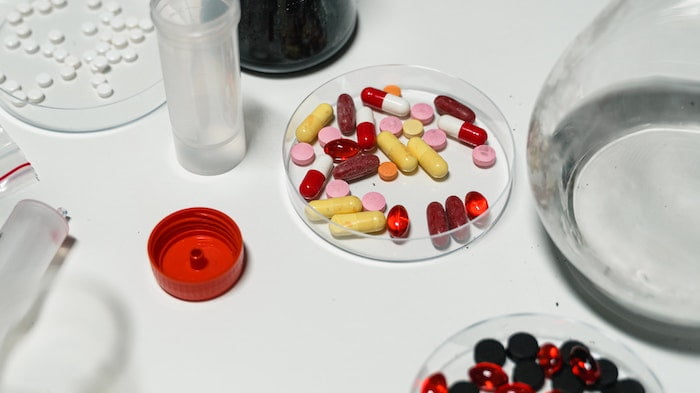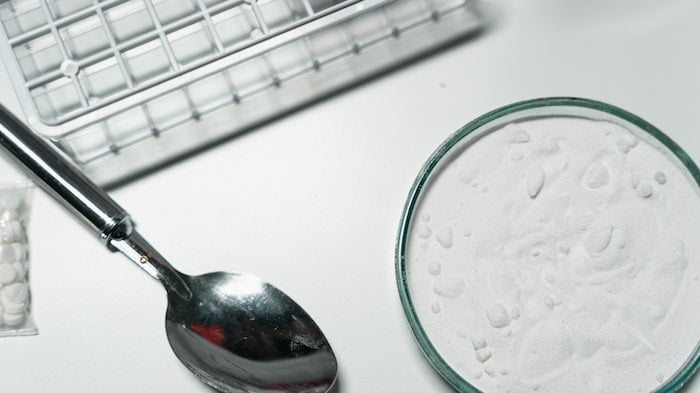When navigating the world of substance misuse treatment, “physical dependence” is a term that crops up frequently. Whether it’s in an online forum or a doctor’s office, you’ll likely hear the word “dependence” used to indicate a cause for concern.
Thankfully, several medical authorities provide a concise definition of physical dependence. The National Institute on Drug Abuse for America [1] describes that this phenomenon comes down to changes in body function.
If someone is physically dependent on a drug, their body can only function normally in the presence of this substance.
As anyone who has taken a drug or binged on alcohol can attest, these substances create powerful feelings of euphoria, and can only do so by disrupting the natural balance of chemicals in the brain.
Faced with this disturbance, the brain will adapt its chemical processes to try and maintain normal function in the presence of a said drug.
What this means is that as the brain revises its chemical production [2], it becomes more tolerant to the effects of alcohol or drugs. This is especially likely to happen if someone is taking a substance daily and has incorporated it into their routine.
In this vicious cycle known as increased tolerance, the more of a substance that someone takes to function normally, the more they’ll need to take to continue getting the same effect. In severe cases of physical dependence, an individual’s tolerance is so high that they risk overdosing each time they use it.
Dependence Vs Addiction: What’s the Difference?

Now that we’ve defined physical dependence, it becomes imperative to distinguish it from its counterpart term: addiction. The interchangeable use of “addiction” and “dependence” can be confusing, especially because they describe different stages in someone’s drug or alcohol misuse [3].
When someone is physically dependent on a substance, it means that their body has adapted to the presence of drugs or alcohol after regular use.
This physiological process will happen to everyone who is repeatedly exposed to prescription medication, illicit drugs, or alcohol. But crucially, being physically dependent on a substance doesn’t mean that you’re addicted, even though it can be a stepping stone towards Substance Use Disorder (SUD).
Because of changes that impact the reward and motivation centres of the brain, victims of addiction will receive unrivalled pleasure from the substance of their choice.
Harrowingly, they’ll often find they cannot quit without professional help to treat the social, psychological, and behavioural issues contributing to their addiction.
While someone who is physically dependent will also undergo brain changes, these occur in different areas of addiction: targeting the thalamus rather than reward centres.
Experts have concluded that this is why our bodies can be dependent on a substance without being addicted to it. But, as we’ll explore, it’s a slippery slope.
Moreover, it’s often far easier for healthcare providers to tell if someone has a drug dependence [4] or a drug use disorder. Experiencing physical withdrawal symptoms abruptly when quitting a substance indicates dependence, and these side effects are often easier to spot than a psychological addiction.
Another simple way to distinguish dependence from addiction is to see the phenomena as short-term vs long-term. While SUD refers to entrenched behavioural symptoms requiring long-term medical attention, dependence is characterised by short-term withdrawal symptoms.
How to Spot the Signs of Physical Dependence

When physical dependence takes over someone’s life, it’s usually evident to those who are closest to them. However, every experience is subjective and unique to the individual, which is why it’s important to understand all the key signs of dependence.
Withdrawal Symptoms
According to the DSM-5 [5]: a gold-standard text for diagnosing various disorders, the main symptom of physical dependence is withdrawal. While people assume that withdrawal symptoms only happen to those who have hit rock bottom in their addiction, this isn’t the case at all.
Even substances such as caffeine are a beloved part of many routines can produce withdrawal symptoms when stopped abruptly. If you decide to forego your morning coffee all of a sudden, you might notice symptoms that indicate your dependency, such as fatigue and a headache.
The same process occurs regardless of whether you’re dependent on caffeine, nicotine, alcohol, stimulants, or opioids; what will change is the type and severity of physical withdrawal symptoms. For example, if your body is getting used to working without alcohol, you might experience anxiety, restlessness, or physical symptoms such as nausea and vomiting.
In contrast, common symptoms of drug dependence, especially opioids, include flu-like experiences: with many people noting shortness of breath, fever, or a sore throat.
They might also notice that they have a higher pulse, which can also be an indication of high blood pressure, especially in the first 48 hours after using.
Cravings are another hallmark symptom of physical dependence, despite being associated with severe addiction. Because their body has learnt to remain stable or rely on a substance for its perceived normality, many people will feel the strong urge to seek out substances when they quit.
Other common withdrawal symptoms [6] include loss of appetite, hypertension, respiratory infections, muscle pain, and medical complications such as seizures in severe cases of dependency.
Oftentimes, psychological dependence will accompany physical dependence, leading people to feel anxious, depressed, or dissociative when they suddenly quit.
A Growing Tolerance
As we’ve briefly covered, physical dependence is often synonymous with increased tolerance due to adaptations the brain is forced to make [7]. As such, needing more of a substance to feel high, or even normal, is one of the first things noticed by people with a dependency.
It might creep up slowly or seem to happen all at once, but you’ll eventually feel that a substance has stopped working in the way it once did.
In the case of alcohol dependence, this could be the inability to feel drunk, or with pain medication, a decrease in the level of relief provided.
Usually, larger doses are ingested to produce the same effect, which can impact someone’s finances as well as their ability to function over time. Some individuals will attempt to stop using a drug before reintroducing it in an attempt to bring back its efficacy.
Lack of Self-Care
This sign of physical dependence might be more apparent to concerned friends or family members who are viewing the condition in their loved ones. When someone is in the throes of physical dependence, it’s not uncommon to lose touch with self-care rituals and forget to look after themselves.
However, because their system is wired to prioritise seeking whichever substance they are used to taking, their priorities may be skewed. Our brains have the power to convince us of all kinds of things, and in the case of dependency, this can be that drug-taking is more important than eating, staying hydrated, or showering.
Concerned significant others often notice that their loved one has neglected their hygiene habits, suffered dramatic weight fluctuations, or developed sleeping problems.
These physical red flags are not the only sign of a growing dependency, however. Frequent substance use can mean that there’s less time for being productive at work, looking after the home, or spending quality time with loved ones.
This pattern of behaviour can lead them to spend more time with certain groups of people, particularly those who use substances, at the expense of other important relationships. For example, someone physically dependent on alcohol [8] might spend large amounts of time at the pub or on nights out.
Are Some Substances More High Risk?

In theory, anyone can become physically or psychologically dependent on a substance without ever expressing addictive behaviours.
However, while any substance, whether prescribed by a doctor or used recreationally can cause biochemical changes in the brain, some of them carry a higher risk of physical dependency.
Perhaps their chemical makeup makes developing a tolerance more likely, or they have a shorter time in which they’re active within the body. Whatever the case might be, there are certain drugs that healthcare professionals are wary of prescribing and others that have higher addictive potential.
1. Benzodiazepines
Described in the medical community as nervous system depressants, benzos such as Valium are usually prescribed to treat insomnia or anxiety disorders. While generally considered safe when taken for short periods, repeated use can lead to a variety of issues.
Worryingly, research has shown that those taking benzodiazepines regularly, even for just 2-4 weeks, are at a high risk of physical dependence.
While they may not be addicted, rebound symptoms will likely occur upon cessation. This means that the problem originally tackled by the benzodiazepine will return in full force, leading to debilitating bouts of anxiety or insomnia.
2. Opioids
Often used to manage chronic pain, opioids like codeine have been on the medical scene for decades, and are known for their addictive potential. Physical dependence is thought to be a common physiological response to prolonged opioid use.
Unlike Opioid Use Disorder (OUD) [9], a physical dependence allows the user to quit without professional support, provided they use a tapering schedule. Common withdrawal symptoms include restlessness, sweating, and muscle pain.
3. Antidepressants
Though not known for their addictive potential, antidepressants used to reduce anxiety and low mood can cause physical dependency. Even if someone has found their antidepressant to be effective for many years, they can still suffer from increased tolerance and physical dependency, seemingly out of nowhere.
SSRIs such as Zoloft are known to cause withdrawal symptoms if they’re discontinued suddenly, and proper care must be taken to stop using them safely.
4. Alcohol
As perhaps the most used substance in the world, many people would describe themselves as regular drinkers and may find themselves developing a physical dependency.
Key signs that someone’s body has become reliant on alcohol include needing to drink more to feel drunk, experiencing cravings, and waking up with “the shakes”: a common symptom of withdrawal [10].
Is There a Way to Prevent Physical Dependence?

As with many health disorders, it’s possible to prevent physical dependence by receiving medical guidance. If you suspect that you might be developing a dependence on your prescribed medication, the first course of action is to contact your GP or psychiatrist right away.
They’ll be able to carefully monitor your dosage, and evaluate any symptoms you might have to build an actionable plan. This plan might look like a small increase in dosage, a reduction in dosage, or helping you to come off the medication altogether.
Of course, there are other situations in which physical dependence might be occurring, including alcohol or illicit drug use. Sadly, many people avoid seeking help for problematic substance use out of shame or the fear of being judged.
But, with the correct medical guidance, it’s possible to halt physical dependence in its tracks and stop addiction from occurring. Clinicians and psychiatrists will handle your case without judgement and with the utmost confidentiality.
Diagnosing Physical Dependence
As previously mentioned, the first step towards treating physical dependence is to receive a formal diagnosis from a trusted clinician. Because this condition is characterised by a physical need for substance use, it’s often far easier to diagnose than an entrenched Substance Use Disorder.
If you’re struggling in any way, scheduling an appointment with your doctor will allow you to talk openly about your substance use and describe the symptoms you’re having.
From here, doctors can refer to resources such as the DSM-5 [11] to assess your risk of withdrawal and whether a drug use disorder could be present. They’ll use this information to build a personalised treatment plan targeting both physical and psychological dependence if needed.
In cases of mild to moderate physical dependence, clinicians may recommend detoxing in an outpatient setting under varying levels of guidance.
Managing Withdrawal at Home
While it can be dangerous to detox at home in severe cases, most people with a physical dependence find tapering at home the best, most cost-effective option. With that being said, it’s important to let your GP know that you’re attempting to detox so that they can check in on you regularly.
During an outpatient detox, you’ll have all the freedom and flexibility of staying in your home environment, while also receiving guidance from professionals.
This might come in the form of home visits from a nurse, or travelling to your GP’s office for regular checkups. If you’re experiencing any mild withdrawal symptoms, you’ll have the chance to receive medications such as anti-sickness tablets, or low-intensity painkillers.
To help yourself remain comfortable during a home detox [12], it’s important to practice self-care rituals and ensure your body has everything it needs.
Make sure to drink about 3 litres of water per day, avoid caffeinated drinks that can cause anxiety, and make sure you have a series of healthy meals planned. It’s also important to tell a friend, neighbour or loved one that you’re detoxing at home so that they can check in on you.
Attending Detox as an Inpatient
While many people can safely wean their bodies off a substance at home, for others, this can be dangerous. Especially if opioids, alcohol, or benzodiazepines are at the core of someone’s physical dependence, they must undergo an inpatient detox.
The term detox describes the gradual, controlled process of letting substances leave the body.
This more intensive form of treatment involves slowly tapering substance use in a controlled, medical environment. Oftentimes, patients are referred to a reputable rehab centre with experience in treating drug use disorders.
Their top-class facilities can help manage the symptoms of withdrawal safely and avoid any medical complications.
Before beginning detox and tackling physical dependence, healthcare providers will design a fully bespoke tapering schedule to ensure the process is comfortable.
They’ll take into account a range of social and environmental factors, alongside how long you’ve been taking the drug to decide how best your dosage can be reduced.
When necessary, you might also receive help in the form of Medication Assisted Therapy (MAT) [13]. Even when substance use is discontinued slowly, there is still a neurochemical imbalance that is often described as “a shock to the system”.
To ease the detox process, various medications are utilised: from substituting the drug with a less addictive alternative (used in opioid dependencies) to anti-nausea drugs and muscle relaxants.
For example, in cases of alcohol dependency, healthcare providers usually prescribe one of the following medications: naltrexone, disulfiram, acamprosate, or nalmefene. Naltrexone helps to prevent relapse by blocking alcohol’s desired effects on the body, while acamprosate and disulfiram help to diminish cravings.
Once you’re feeling better and your caseworker is sure that you’ve curbed the physical dependence, you may be referred for ongoing therapy.
Tried and tested methods such as Cognitive Behavioural Therapy (CBT) help countless people overcome lingering psychological dependence while introducing them to healthier ways of coping with cravings.
Are you Ready to Seek Help?

There’s no right or wrong time to seek help for a physical dependency, and you don’t need to wait until the situation worsens. If after reading this article you’ve begun to recognise symptoms in yourself or someone close to you, you can reach out to the OK Rehab team.
Dialling 0800 326 5559 [14] will put you in contact with a member of our professional, sympathetic team who will reassure you that you don’t have to go through the recovery process alone. Whether you want to access treatment right away, or simply want someone to talk to about your experience, our team are here to help.
References
[1] National Institute on Drug Abuse NIDA.NIH.GOV | National Institute on Drug Abuse (NIDA)
[2] Drugs, Brains, and Behaviour: The Science of Addiction https://books.google.com.vn/books?id=n-OeI0fPx38C&printsec=frontcover&dq=substance+addiction&hl=en&sa=X&ved=2ahUKEwjk_Ynan639AhWDsVYBHQm3AoM4ChDoAXoECAUQAg#v=onepage&q=substance%20addiction&f=false
[3] Ending Discrimination Against People with Mental and Substance Use Disorders, The Evidence for Stigma Change https://www.google.co.th/books/edition/Ending_Discrimination_Against_People_wit/j6PKDAAAQBAJ?hl=en&gbpv=0
[4] Chemical & Biological Aspects of Drug Dependence Chemical & Biological Aspects of Drug Dependence – Google Books
[5] DSM-5 Criteria for Addiction Simplified https://www.addictionpolicy.org/post/dsm-5-facts-and-figures
[6] Substance Withdrawal Syndrome https://books.google.com.vn/books?id=KexyPgAACAAJ&dq=withdrawal+symptoms&hl=en&sa=X&redir_esc=y
[7] The Addiction Solution: Unravelling the Mysteries of Addiction Through Cutting-Edge Brain Science https://books.google.co.th/books?id=_HlQfxWyJogC&printsec=frontcover&dq=valium+addiction&hl=en&sa=X&redir_esc=y#v=onepage&q=valium%20addiction&f=false
[8] NHS: Alcohol Misuse Treatment Alcohol misuse – Treatment – NHS (www.nhs.uk)
[9] Treating Opioid Use Disorder in General Medical Settings Treating Opioid Use Disorder in General Medical Settings – Google Books
[10] Ok Rehab: Alcohol Withdrawal Symptoms Alcohol Withdrawal Symptoms | OK Rehab
[11] DSM-5-TR® Made Easy: The Clinician’s Guide to Diagnosis DSM-5-TR® Made Easy – Google Books
[12] Ok Rehab: Home-Based Alcohol Detox Home-based Alcohol Detox | OK Rehab
[13] Ok Rehab: Medically-Assisted Therapy (MAT) For Addiction Medically-Assisted Therapy (MAT) for Addiction | OK Rehab
[14] Ok Rehab: Help For Myself https://www.okrehab.org/help/myself/





